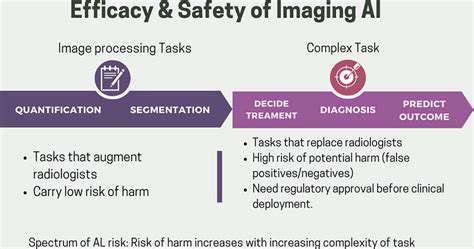Becoming a Freelance Developer: A Guide
Crafting Your Niche Description and Services
A well-crafted niche description serves as both marketing tool and professional compass. It should be specific enough to attract the right clients but flexible enough to accommodate related opportunities. Avoid generic terms like full-stack developer in favor of precise descriptions like React specialists for healthcare SaaS platforms. This clarity helps clients immediately understand if you're the right fit for their needs.
Pricing Strategies for Your Services
Pricing reflects more than just hours worked - it communicates your perceived value. Consider value-based pricing for projects where your expertise creates disproportionate benefits for the client. For maintenance work or well-defined tasks, hourly or project-based pricing may be more appropriate. Always structure pricing to align your incentives with the client's success - this builds trust and leads to repeat business.
Building a Professional Online Presence

Choosing the Right Platform
Platform selection should begin with understanding your content strategy. Are you showcasing portfolio pieces, publishing technical articles, or offering client resources? WordPress excels for content-rich sites, while specialized portfolio platforms better suit visual work. Many developers underestimate the importance of platform longevity - migrating sites later can be costly and disrupt SEO.
Technical constraints often dictate platform choice more than features. If you're not comfortable managing servers, avoid self-hosted solutions regardless of their customization potential. Conversely, if you need specific integrations, ensure your platform supports them before committing. This practical approach prevents frustration down the line.
Designing an Engaging User Interface
Effective developer portfolios balance technical credibility with approachability. Clients need to quickly understand your capabilities without getting overwhelmed by jargon. Use progressive disclosure - surface key information immediately while making deeper technical details easily accessible. This accommodates both technical and non-technical visitors.
Navigation should guide visitors toward your most important content within three clicks. Common paths include: portfolio samples for visual proof, case studies demonstrating problem-solving, and clear contact methods. Every design element should serve one of these goals.
Content Creation and Optimization
Technical content performs best when it solves specific problems rather than covering broad topics. Instead of Introduction to React, write Solving Common State Management Issues in React. This targets developers actively searching solutions, establishing you as an authority. Include real-world examples from your work when possible - these concrete demonstrations build credibility.
Optimize content for both search engines and human readers. Technical audiences spot keyword stuffing immediately, so focus on natural language that answers questions thoroughly. Long-form content (1500+ words) often ranks better for technical queries, but ensure every paragraph adds value.
Marketing and Promotion Strategies
Effective promotion means meeting your audience where they already are. For developers, this often means technical forums, GitHub communities, and niche Slack groups rather than broad social platforms. Share insights rather than sales pitches - helpful answers to technical questions build reputation more effectively than direct self-promotion.
Consider creating a signature project - an open-source tool, detailed case study, or technical whitepaper that demonstrates deep expertise. These assets continue attracting opportunities long after initial publication, creating compounding returns on your marketing investment.

Pricing Your Services and Securing Your First Clients
Understanding Your Value
Accurate pricing requires understanding both market rates and your unique differentiators. Track time meticulously on early projects to identify where you deliver exceptional efficiency or face unexpected challenges. This data prevents underpricing future work. Many developers make the mistake of pricing based on their technical skills alone - remember that clients also pay for clear communication, reliability, and business understanding.
Consider offering tiered pricing with clear differentiation between packages. This accommodates different client budgets while steering them toward your most profitable offerings. Always include scope boundaries to prevent scope creep - one of the most common profitability killers for freelancers.
Crafting Compelling Proposals
Winning proposals focus on outcomes rather than activities. Instead of I'll build a React application, say I'll create a patient portal that reduces appointment no-shows by 30%. This demonstrates business understanding that executives value. Include risk mitigation strategies - clients appreciate seeing you've anticipated potential challenges.
Structure proposals to tell a story: current pain points, your solution approach, expected benefits, and implementation roadmap. This narrative flow helps non-technical stakeholders understand your value even if they skip technical details. Always conclude with clear next steps to facilitate quick decisions.
Attracting and Converting Leads
Early in your freelance career, consider trading discounted rates for case studies and testimonials from recognizable clients. These social proofs become invaluable for securing higher-paying work later. Be strategic about these exchanges - ensure the projects showcase skills you want to highlight and clients you'd like to attract more of.
Develop a lead qualification system to avoid wasting time on poor-fit opportunities. Simple criteria like budget range, project alignment, and decision-maker access can quickly identify promising leads. This focus prevents burnout from chasing unlikely conversions.











![How to Build Your First Website with HTML & CSS [Tutorial]](/static/images/25/2025-05/BeyondtheBasics3AAdvancedTechniques.jpg)
